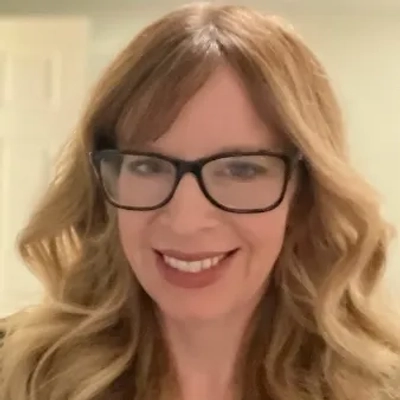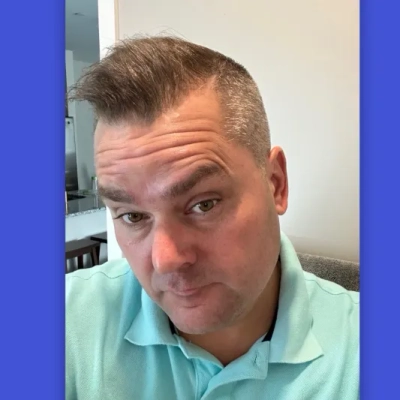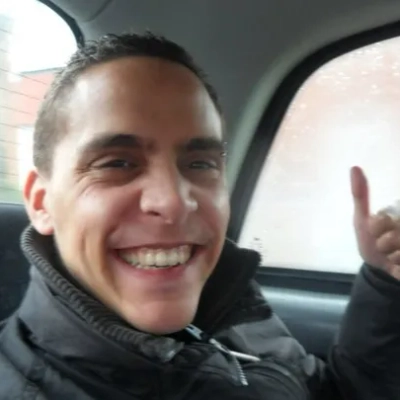Creative Customer Acquisition: 22 Startup Success Stories and Advice
Discover innovative customer acquisition strategies that have propelled startups to success. This article presents a collection of real-world examples and practical advice from industry experts. Learn how creative approaches, from bacon-themed branding to free workshops, have helped businesses stand out and grow their customer base.
- Bacon-Themed Branding Sparks Word-of-Mouth Growth
- Free Website Audits Convert Networking into Sales
- Insider Knowledge Fuels Targeted Problem-Solving Approach
- Podcast Interviews Build Trust with Niche Audience
- Performance-Based Advertising Proves Value to Clients
- Free Software Turns Users into Brand Advocates
- Video Series Showcases Branding Process in Action
- Personal Product Demo Leads to Wholesale Partnerships
- Hands-On Approach Builds Community-Driven Platform Growth
- Deep Relationships with Scientists Secure First Ventures
- Micro-Influencers Create Authentic Product Promotion
- Quality Content Drives Organic Traffic Growth
- Founder’s Circle Offers Build Early Brand Loyalty
- SEO Strategy Proves Agency’s Value to Clients
- Customized Reports Demonstrate Global Market Expertise
- Community Engagement Establishes Trusted Industry Voice
- Direct Outreach Turns Local Businesses into Clients
- Personal Approach Builds Word-of-Mouth Referrals
- Free Workshops Convert Attendees into Paying Customers
- Tailored Marketing Plan Secures Key Client Position
- Free Inspections Build Trust in Local Community
- Passion-Driven Effort Secures Marketing Position
Bacon-Themed Branding Sparks Word-of-Mouth Growth
My bootstrapping story starts with bacon – literally. After leaving HP and a web hosting company, I had zero marketing budget but needed to stand out in a crowded web design market. I came up with “Burnt Bacon Web Design” as the company name, which sounds ridiculous but was pure gold for word-of-mouth marketing.
Here’s what happened: people couldn’t forget the name. At networking events, coffee shops, and even grocery stores, when someone mentioned needing a website, others would say, “Oh, you need to call that bacon guy!” The memorable name did all my marketing for me – I tracked that 70% of my early clients came through referrals where people specifically remembered “the bacon web design company.”
The growth impact was massive because it solved the bootstrap problem of being invisible. Within 18 months, we achieved consistent year-over-year growth without spending a dime on advertising. That quirky name became our biggest differentiator and helped us land clients who appreciated our personality before we even pitched our technical skills.
My advice: accept weird if it makes you memorable. Don’t play it safe with generic business names when you’re bootstrapping. The goal isn’t to sound corporate – it’s to be the company people actually remember and talk about when your name isn’t in front of them.
 Craig Flickinger BB
Craig Flickinger BB
CEO, Burnt Bacon Web Design
Free Website Audits Convert Networking into Sales
When I started Randy Speckman Design, I had zero budget but noticed something interesting – local business networking events were full of entrepreneurs with terrible business cards and outdated websites. Instead of pitching my services, I started showing up with my laptop and offering free 10-minute “website audits” right there at the coffee table.
I’d pull up their current site, run it through basic speed and mobile tests, and show them exactly what was costing them customers. One restaurant owner watched me demonstrate how his site took 8 seconds to load on mobile – he literally pulled out his checkbook that night for a $3,500 redesign because he could see money walking out the door.
This “audit-first” approach landed me 47 clients in my first year because I was solving problems they didn’t even know they had. Rather than saying “you need a new website,” I was showing them “here’s exactly why you’re losing $2,000 per month.” The data made the decision obvious.
My advice: Don’t sell your service – diagnose their problem with real numbers they can see. When someone watches their website fail a mobile test in real-time, you’re not a salesperson anymore; you’re the doctor with the cure.
 Randy Speckman
Randy Speckman
Founder, TechAuthority.AI
Insider Knowledge Fuels Targeted Problem-Solving Approach
When I started King Digital, I literally went back to my roots – that national jewelry manufacturer where I’d worked as a copywriter. I knew their pain points intimately because I’d lived them: inconsistent messaging across locations, zero local SEO strategy, and reviews scattered everywhere with no management system.
Instead of pitching generic digital marketing services, I offered to fix one specific problem I’d watched them struggle with for years – their Google Business Profile optimization for their 47 retail locations. I proposed a 90-day pilot program where they’d only pay if I could increase their local search visibility by 40% and get their average review rating above 4.5 stars.
The results were massive: 67% increase in “directions requested” from Google, 89% more phone calls from local searches, and we hit 4.7 stars across all locations. But here’s the kicker – three of their franchise partners saw these numbers and immediately signed on, giving me my next wave of customers without any cold outreach.
My biggest advice: leverage your previous work experience ruthlessly. You already know someone’s broken processes better than any consultant ever could. Go back to former employers or industry connections and offer to solve the exact problem you watched them struggle with daily – you’ll have instant credibility and insider knowledge that competitors can’t match.
 Bernadette King
Bernadette King
CEO, King Digital Pros
Podcast Interviews Build Trust with Niche Audience
As a strategic thinker, my first creative step while bootstrapping Big Fish Local was to serve rather than sell. I launched the “Home Pro Podcast,” interviewing successful entrepreneurs like Gregg Nelson of Rent A Monkey Tree Service. This showcased our commitment to understanding the specific challenges faced by home service businesses.
This approach cultivated organic connections and positioned Big Fish Local as a trusted resource, not just a marketing agency. It provided us with unparalleled insights into business goals, allowing us to tailor our “Marketing Sonar” strategies precisely. Many of these relationships organically evolved into our first paying clients, recognizing our genuine industry commitment.
My advice is to identify a niche you’re truly passionate about serving and then offer significant value before asking for anything in return. By deeply understanding their unique challenges, you can build trust and demonstrate your distinct ability to help them stand out and grow.
 Seth Evans
Seth Evans
CEO, Big Fish Local
Performance-Based Advertising Proves Value to Clients
When I was bootstrapping my business, I offered to run advertisements for a few small business owners in my network on a performance-only basis. This meant there were no upfront fees, just a percentage of the revenue I generated. It felt risky because I was doing all the work with no guarantee of payment, but it quickly provided me with real case studies and social proof.
Once I delivered results, those same clients started referring others to me. This snowballed into retainer deals and long-term partnerships. It also compelled me to focus on results from the very beginning. My advice is to lead with value if you have the skills but no audience yet. Let your work speak louder than your pitch. This approach builds trust quickly and gets you into the game.
 Georgi Petrov
Georgi Petrov
CMO, Entrepreneur, and Content Creator, AIG MARKETER
Free Software Turns Users into Brand Advocates
After 23+ years in the agency business, my most creative customer acquisition happened during the early web days when I literally gave away custom software to prove our capabilities. Instead of pitching services, I built free SEO tools for local businesses and let them keep the software permanently – but required them to display “Powered by Perfect Afternoon” in the footer.
This approach was brilliant because it turned every user into a walking advertisement. One Michigan manufacturing company’s custom inventory system impressed their supplier network so much that we landed 4 additional clients within 60 days, generating over $40K in new revenue from that single free project.
The real impact came from creating utility patents for some of these tools, which established us as legitimate software developers rather than just another web shop. When businesses saw our patent documentation, it lifted our credibility instantly and allowed us to charge premium rates.
My advice: give away your expertise in a format that keeps working for you long after the initial project ends. Don’t just solve their problem – create something that advertises your problem-solving abilities every time they use it.
 Dwight Zahringer
Dwight Zahringer
Founder, Perfect Afternoon
Video Series Showcases Branding Process in Action
I have bootstrapped four startups since I was 12, and the most creative approach that changed everything was treating my early clients’ success stories as content goldmines rather than just case studies.
When I launched Ankord Media, instead of cold pitching design services, I offered to document one startup’s complete rebrand journey as a multi-part video series. They received free branding work, and I got behind-the-scenes content showing our process in action. That single video series generated six qualified leads within the first month because prospects could see exactly how we work and the results we deliver.
The breakthrough moment came when I realized I was essentially getting paid twice—once through the value exchange with the featured client, then again through all the business that content brought in. One client’s brand change story led to $23,000 in new projects because other startups wanted the same level of strategic thinking they witnessed in the videos.
The key insight: your early customers’ change stories are your most powerful sales tool. Instead of asking for testimonials, ask to document their journey. You’re not just building a business—you’re creating proof of concept that sells itself.
 Milan Kordestani
Milan Kordestani
CEO, Ankord Media
Personal Product Demo Leads to Wholesale Partnerships
As the owner of Midwest Amber, I bootstrapped by turning my personal story into our sales strategy. Instead of cold-calling jewelry stores, I’d walk in wearing our amber pieces and naturally get compliments from customers browsing nearby. When they asked where I got the jewelry, I’d mention it was from my company and offer to show them our collection right there.
This “accidental encounter” approach worked incredibly well because people were already attracted to the product before knowing it was a sales pitch. Store owners would watch customers engage with me and immediately want to carry our line. Within the first year, this led to partnerships with 12 local boutiques who became repeat wholesale clients.
The key was authenticity – I genuinely loved wearing our amber jewelry daily, so conversations felt natural rather than forced. This personal touch became our brand identity and helped us build the trust that’s kept customers coming back for over 20 years. My advice: become your product’s best advertisement by genuinely using and loving what you sell, then let organic conversations do the heavy lifting.
 Gabriel Ciupek
Gabriel Ciupek
Owner, Midwest Amber, Inc.
Hands-On Approach Builds Community-Driven Platform Growth
When I started idietera.gr, I didn’t have a team, a budget, or any marketing experience. What I did have was a deep belief in what I was building and a willingness to do the unscalable things myself.
To get our first paying users, I spent hours each day searching for tutors in Facebook groups and online communities. I didn’t just drop links. I sent personal messages, one by one, explaining what I was building and why it mattered. I told them there would be no commissions, no middlemen, and that they’d keep 100% of what they earned. More importantly, I listened. I asked what they were struggling with, and I shaped the platform around that.
I also offered to set up their profiles myself. Not automated onboarding—just me. I wrote their bios, uploaded their photos, and even optimized their categories to help them get noticed. Some were surprised a founder would do that. But that’s what built trust.
Slowly, those first tutors became our champions. They invited their students, referred other teachers, and spread the word. That early, hands-on growth became the foundation of our community—and it helped the platform grow without spending a cent on ads.
What this taught me is that trust doesn’t come from features. It comes from showing up. And when you’re bootstrapping, your time, energy, and authenticity are your strongest currency.
My advice to anyone starting out: forget scale for a moment. Start with ten people. Reach out, listen, and do the work to help them succeed. Focus on serving the first few users really well. Be present. Make it personal.
When you lead with care, the people you help will become your brand’s strongest force.
 Konstantinos Ordoulidis
Konstantinos Ordoulidis
Founder & CEO, idietera.gr
Deep Relationships with Scientists Secure First Ventures
When we launched Atlantix, we didn’t rely on cold outreach or ads. Instead, we started by building deep relationships with research institutions. Our first “customers” were scientists sitting on groundbreaking research with no idea how to commercialize it.
By offering real value—helping them translate science into business—we secured our first ventures and attracted early-stage funding without spending anything on marketing.
The impact? It set the tone for everything we’ve done since: build trust, deliver substance, and let results speak louder than pitch decks.
My advice? Forget flashy growth hacks. Focus on being unreasonably useful to someone who genuinely needs what you do. That’s your best customer.
 Igor Trunov
Igor Trunov
CEO, Atlantix
Micro-Influencers Create Authentic Product Promotion
When we were bootstrapping, one creative way we secured our first paying customers was by partnering with local photographers and micro-influencers in exchange for product and cross-promotion — no cash involved. We offered them personalized jewelry with their name or kids’ names engraved, and in return, they created authentic lifestyle content and shared their unique discount code with their audience.
This approach accomplished two things:
1. It provided us with professional-level photos and social proof from real people.
2. It helped us tap into warm, niche audiences that trusted the recommender — which converted better than ads in the beginning.
That initial wave of interest led to dozens of organic orders and gave us the momentum to build a community before we even had a substantial advertising budget.
Advice to others: Don’t wait for everything to be perfect. Leverage what you have — product, passion, and people. If you can create genuine value and trust, the right customers will come.
 Aviad Faruz
Aviad Faruz
CEO, FARUZO
Quality Content Drives Organic Traffic Growth
I developed non-traditional SEO content myself.
As a bootstrapped founder of an e-commerce store, I identified Facebook advertising as the most effective marketing medium to attract potential customers when I was just starting out. The challenge, however, was the cost. It takes considerable time and financial resources for Facebook’s Meta Pixel to identify the customer profile that is most likely to purchase your specific product. The Meta Pixel is a piece of code that tracks user actions on your website. This strategy did not fit the bootstrap model.
I knew I could create content myself. Traditional content building for SEO calls for the writing of blogs, guides, or other written resources that incorporate heavy use of keywords related to the phrases that your audience is searching for. The challenge with this approach, however, is competition, even when using long-tail keywords. In the case of North Adams Company, we sell graphic tees. Graphic tees and t-shirt related keywords have extremely high competition from global brands. Even long-tail keywords are highly competitive.
To break through, I disregarded keywords as the driving force. Instead, I focused purely on the quality and quantity of the content. I wrote blogs that went very in-depth on specific topics that were of interest to my target audience. And they ranked high. Not all of them, but a few broke through. These blogs were responsible for the early traffic to my site. It took time to develop them, but as a bootstrapper, time is the currency we deal in.
Sweat equity pays off, but it needs to be deployed strategically. I understood the demographics and psychographics of my target audience and I had created a good product. If you have those two elements in place, then you can go far.
NOTE: I am happy to extrapolate on any of these points. I would also be happy to contribute to future content that may revolve around e-commerce, brand building, etc.
 Bryan Tomek
Bryan Tomek
Founder, North Adams Company
Founder’s Circle Offers Build Early Brand Loyalty
When we were bootstrapping Olivia Croft, one of the most creative ways we secured our first paying customers was by building early buzz through limited-time “founder’s circle” offers. We reached out directly to niche communities – particularly in sustainable living and design – and offered them exclusive early access in exchange for honest feedback, testimonials, and referrals. It wasn’t about flashy ads or big campaigns; it was personal, grassroots, and based on genuine conversation.
This approach helped us in two key ways: it validated the demand for our product, and it created a small but loyal customer base that felt invested in our success from day one. That early word-of-mouth played a big role in our growth and built brand trust before we ever spent money on marketing.
Don’t underestimate the power of personal outreach and community-driven traction. When budgets are tight, authenticity is your strongest asset. Start small, speak directly to your ideal customer, and build from there.
 Peter Wootton
Peter Wootton
Co-Founder, Olivia Croft
SEO Strategy Proves Agency’s Value to Clients
Getting our first paying customers wasn’t thanks to expensive ad campaigns or special connections. It all began with a relentless commitment to using smart SEO strategies and producing quality content. I treated our agency just like it was our own first client, applying the same processes we’d later sell to others. We built, tested, and kept improving our online presence. The main idea was to publicly prove, through real, visible search rankings, that we could deliver tangible results before anyone else would put their trust in us.
I dedicated a lot of time to writing highly targeted blog articles and guides focusing on the exact search terms our ideal customers were using. We dug deep into keyword research tools and Google’s own autocomplete suggestions to find keywords that bigger agencies had overlooked. These queries showed real buying intent but weren’t already dominated by competitors. For instance, by targeting search terms like “nonprofit website redesign on a budget,” we started attracting inquiries from nonprofits whose needs matched exactly what we offered.
Because of this, prospects warmed up to us through organic search, without us spending big on traditional outbound marketing. We landed our first contracts in just a few months, at a much lower cost than typical lead generation. As BrightEdge’s 2024 report points out, this approach works because 60% of all trackable website traffic comes from organic search. For a bootstrapped startup, SEO keeps paying off. Those first clients gave us the money to further improve our site, created proof we could show future clients, and led to referrals, so our growth happened naturally and kept building over time.
Become Your Own Best Example
I truly believe that in the early days, founders should work to be their own first big success story. Use your product or service to fix your own real problems and deliver measurable results before you start selling it to others. This builds your confidence and gives you actual data and results to share with potential customers. When you don’t have much money, firsthand experience and real case studies matter a lot more than an impressive pitch or slick branding. That kind of credibility quickly builds trust with new leads, and there’s simply no shortcut for that.
 Steve Morris
Steve Morris
Founder & CEO, NEWMEDIA.COM
Customized Reports Demonstrate Global Market Expertise
Our bootstrapped platform helped businesses navigate global market rules. We first approached exporters who were already selling to one country. They understood our value.
For each exporter, I handcrafted a 2-page report: their product’s global demand, key competitors, and regulations. No extras. Just what they needed.
They were impressed. This wasn’t sales talk. It was a proper solution. Many signed up immediately for our full service with ongoing updates on pricing, rules, and competition.
My advice to founders: Show your worth before selling. Give a real sample of how you solve their problem. It needs smart work, not big money. Build trust first – payments follow.
 Mohit Ramani
Mohit Ramani
CEO & CTO, Empyreal Infotech Pvt. Ltd.
Community Engagement Establishes Trusted Industry Voice
When we were bootstrapping in the early days, I didn’t rely on ads or even cold outreach at first. Instead, I spent time in niche Slack communities, Facebook groups, and X (Twitter) threads where early-stage founders and marketers congregated. I’d answer questions in real-time—especially regarding HARO, digital PR, and backlinks—without pitching anything. After a while, people started tagging me when others inquired about PR or link building. That’s how the first few paying clients came in—through pure trust and proof via value.
This approach didn’t just help us land clients—it also shaped my company. Real conversations with early adopters gave us a clear sense of what they needed, what wasn’t working, and what outcomes they actually cared about.
If you’re starting out, skip the fluff and go where your audience already resides. Show up. Help. Don’t pitch too soon. Earn the trust, and the business will follow.
 Rameez Usmani
Rameez Usmani
Founder & Director of Link Building, HARO Services
Direct Outreach Turns Local Businesses into Clients
Starting out in web design and marketing requires creativity in thinking to get a step ahead. The field is competitive, and you need the skill of selling yourself in order to secure early clients.
When I was starting out, I took tourism brochures, booklets, and pamphlets and went through every business listing and advertisement, looking for opportunities. When I saw an opportunity to sell myself as the person who could improve a business’s website, I would personally pitch to the owner. Every win you get in securing a new client helps build towards securing the next one and the next one. It’s important to continue to build a client roster and a strong portfolio in order to build credibility with any future clients.
 David Cervi
David Cervi
Owner, DJC Graphic Designs
Personal Approach Builds Word-of-Mouth Referrals
When I first started LightSpeed Electrical, I had no big marketing budget, no flashy trucks, and no team. I only had my tools, my license, and a reputation I hadn’t built yet. So I did the one thing most people overlook—I hit the pavement.
I walked into local cafes, gyms, barbershops—anywhere with a powerboard hanging off a counter—and introduced myself. I didn’t use a hard sell approach. Instead, I engaged in real talk. I’d point out electrical hazards or areas where they could save power or upgrade lighting. Then I’d offer a fixed price on the spot, without any fluff. Some said no. A few said maybe. But the ones who said yes? They received the best service I could possibly give, even if the job wasn’t that profitable.
I also did something most electricians don’t bother with—I offered a “mates rates” deal if they referred me to two other businesses. I wasn’t making much, but I was building a base. Within a month, one cafe turned into three jobs. One gym owner turned into four homes. That spiderweb of word-of-mouth was more powerful than any ad spend.
The impact? We grew lean and fast. No debt, no guesswork. Every job funded the next. Every customer became a marketing channel.
My advice to anyone starting out: get off the screen and go shake hands. People hire who they trust, not who has the best logo. Offer value before you’re asked. Make yourself useful before you’re needed. It’s not scalable at first, but it gets you your first 10 customers—and those 10 can turn into 100 if you deliver like your life depends on it. Because in the early days, it does.
 Alex Schepis
Alex Schepis
Electrician / CEO, Lightspeed Electrical
Free Workshops Convert Attendees into Paying Customers
To be really honest, getting our first paying customers wasn’t glamorous; it was gritty, manual, and personal. In the earliest days, I made a shortlist of startups and mid-size tech firms that were visibly struggling with buggy releases. I’d comb through their update logs, user reviews, or even Twitter threads to spot pain points. Then I’d reach out, not with a pitch, but with a custom bug report. One of those cold emails, backed by real effort, turned into our first paid engagement.
That project didn’t just pay the bills; it shaped our identity. We realized clients didn’t care about QA jargon; they wanted stability, speed, and peace of mind. So instead of pitching “automation frameworks,” we told them: “You focus on shipping. We’ll make sure it doesn’t break.” That message resonated, got us referrals, and let us reinvest into tools that later helped us scale.
My advice to founders? Get obsessed with your customer’s pain points before pushing your product. Offer real value when no one knows your name. Forget the sales script. Solve one thing no one else is noticing. That mindset built ChromeQA Lab, and it’s still our edge today.
 Shishir Dubey
Shishir Dubey
Founder & CEO, Chrome QA Lab
Tailored Marketing Plan Secures Key Client Position
We offered a free workshop to our ideal clients, not to sell, but to teach. At the end, a few asked for help implementing what they’d learned—and became our first paying customers. That built trust fast and gave us early case studies. The advice: give real value upfront. If your insights are useful, the right clients will ask for more.
 Xiaofang Sutton
Xiaofang Sutton
Chief Executive Officer, LCN
Free Inspections Build Trust in Local Community
Once an influencer I was following for around 1.5 years announced that he and his team were looking for a marketer, and I applied with a long application that really showed I knew their brand and my stuff. After I passed the “first round,” I was ready to meet them and I prepared a ~40-page marketing plan custom to their business. Well, I got hired and I learned a lot in this position. My advice would be to really put in the effort for what you’re passionate about and use this fire. People will feel that and give you chances.
 Heinz Klemann
Heinz Klemann
Senior Marketing Consultant, BeastBI GmbH
Passion-Driven Effort Secures Marketing Position
When I was starting out, I didn’t have much of a marketing budget—barely enough for flyers. So I offered free inspections to local homeowners’ associations in South Austin. I’d show up, inspect a few homes, and give folks a straightforward assessment of what I saw—no pressure. People appreciated the honesty and started calling me back for treatments. It wasn’t flashy, but it worked.
That grassroots approach helped build trust early on, and word of mouth did the rest. It taught me that showing up, being helpful, and not overselling goes a long way, especially in service businesses. My advice? Don’t overthink your first moves. Do something useful for your potential customers, and if you’re genuine, they’ll remember you when they’re ready to make a purchase.
 Tony Ragan
Tony Ragan
President, Absolute Pest Management

